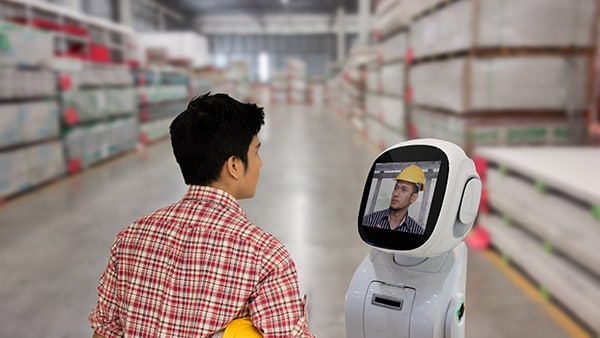What Robot Do You Need?
May 13, 2020

There are lots of robots out there – from the Class M3 Model B9 in “Lost in Space” to the funny-talking Terminator to Michael Jackson’s robot moves in “Dancing Machine.” But, the real robot – or just plain “bot” – you’re probably looking for is something to help your business run smoother and your employees to do more productive work. There are different levels of robotics – or automation – available based on what you’re trying to do. Here’s a basic guide to get you to the level you need.
Robotic process automation – freeing up your employees for more important work
Your employees often spend a ton of time on repetitive mundane tasks thanks to non-integrated systems or silos of information that you think can only be bridged manually. Think about some of your data input tasks, you need to manually enter information from one document or system into the next document or system, or information must be parsed out to various reports or departments. Repetitive work like this causes employees to become distracted, bored
This is where robotic process automation (RPA) comes into play. Advances in RPA have made it easier, quicker and cheaper to roll out with reduced risk. It’s quick – often going from “ideation to operationalization” in three to four weeks. RPA can run repetitive, mundane tasks 24 hours a day, quickly, with an extremely low error rate. Once programmed, it never needs a refresher course, and updates or changes are implemented easily – without additional training costs. RPA is not intended to replace employees – even lower-level workers. It’s meant to free up those employees for more important work. They can become “knowledge workers.”
Okay, so what’s hyper-automation or hyperautomation?
In “Gartner Top 10 Strategic Technology Trends for 2020,” they define
Intelligent automation / hyperautomation – getting by with a little help from my friends
Let’s move up a bit to “exception” work, like claims processing in healthcare insurance. While most claims processing never needs human intervention (because of RPA), your claims process specialist – a knowledge worker – must review certain claims for such things as over-threshold amounts, suspected fraud, audit, and other exceptions. Often there are tedious, repetitive tasks associated with these exceptions, like compiling facts, figures and information out of different data sources, business applications and/or policy documents. Your knowledge worker needs to get this specific information, based on whatever the exception kick-out is, to make a decision. But compiling the info (even assuming no mistakes are made) slows down the worker, the decision, and the process – resulting in inefficiencies and higher costs.
Intelligent automation / hyperautomation is the answer here. This type of bot learns where to get the information needed to process the exception – quickly, accurately
Intelligent automation / hyperautomation is especially valuable when volume is considered. Claim filings can vary widely based on events and time of year. And when something like COVID-19 hits, with the potential for an explosion in claims volume with specific claim exceptions – for example, no co-pays – volume and workforce size are difficult to match. Having a stable workforce while scaling up or down for claims volume is difficult. There’s a lot of time and cost involved in hiring and training knowledge workers. Hire too many and you may end up with layoffs; hire too few and you’re scrambling to get the job done. IA bots, also known as digital worker assistants or simply digital workers, can be easily added or removed to scale up or down based on volume, helping to stabilize your knowledge-worker hiring.
Intelligent automation / hyperautomation is not just for claims exceptions. It can be used across multiple industries to actually make decisions based on the information it gathers. Examples include:
- Healthcare: Check on provider data to determine “in-network” or “out-of-network” status.
- Banking and financial services: Reconcile accounts and post journal entries.
- Mortgages/loans: Process documentation and related decisions for loan applications.
Like straight RPA, intelligent automation is not meant to replace workers. It gives them the information they need to do their jobs quicker, more efficiently and more accurately.
Artificial intelligence/machine learning – “I’ve got this”

Artificial intelligence/machine learning (AI/ML) capabilities are the top capabilities of digital workers. A digital worker that includes an AI/ML solution can complete complex decision making on its own. This is because new AI/ML techniques look at large amounts of data, make connections, and generate insights better and quicker than a knowledge worker ever could.
For example, basic automation can make a decision on a loan by collecting data and aligning it with the parameters set by the financial institution. An organization using AI/ML, by contrast, can analyze the entire historical loan portfolio on an ongoing basis, and recognize, for example, that a certain combination of factors leads to a much higher risk of default. If the loan application has those factors, the AI/ML digital worker will deny the loan.
AI/ML is for “what’s next” questions – such as who’s likely to default on a loan, what’s your customer’s next purchase, or when might your equipment break down. You would use artificial intelligence and machine learning tools to automatically detect sophisticated data patterns to predict potential outcomes, giving you better decision-making insight. Does AI/ML replace workers? Again, we would say no – AI/ML gives your company opportunities for sophisticated, strategic work that generates competitive advantages.
How can we help?
If you’re interested in any of the bot concepts discussed here, we can sit down with you for a free discovery workshop. If we believe one of our digital workers can help, then we’ll recommend a solution from our catalog of digital workers. If you want to go further, we’ll jump
To learn more, email us at solutions@prolifics.com.